Time: 11:00AM – 4:00PM
Location: Below Gross Reservoir
South Boulder Creek 08/28/2024 Photo Album
With Labor Day weekend and a trip to Hilton Head Island in my near future, I was facing perhaps my last fly fishing outing until the second week of September. I checked the flows on my home waters, South Boulder Creek, and the water managers cranked down the valve to 100 CFS. It was 122 CFS during my last visit to the tailwater below Gross Reservoir, and that level dictated extreme caution when wading with only a few viable crossing points. The combination of lower flows and the prospect of the presence of green drakes clinched my decision. I made the trip to the Walker Ranch Loop trailhead for a day of fly fishing.
The temperature at the parking lot, when I arrived, was 74 degrees, and I suspect that the reading reached eighty degrees, by the time I hiked out of the canyon at 4PM. I chose my Loomis two piece five weight for my casting tool. Somehow I strained my neck while camping over the weekend, and I felt like the short rod would provide less strain to the neck area, when I lifted the line to make a cast. Also, I planned to toss a double dry fly, and the slow action Loomis is well suited to that task.
By the time I hiked down the trail to my chosen fishing spot, it was 11:00AM. I selected a peacock hippie stomper from my MFC fly box, and then I added a parachute green drake on a twelve inch dropper. It was slow going initially, as I prospected some very attractive pools and pockets with nary a look, but I persisted with the double dries, and eventually I was rewarded for my patience. In the 1.5 hours before lunch, I landed ten trout, and this included a couple very respectable brown trout and rainbow trout. Initially my best results came from pockets and runs along the edge of the creek, but as time passed, the fish in the larger and more obvious locations began to respond as well.
There was very little strategy on Wednesday, August 28. I fished the double dry consisting of the stomper and paradrake for the entire time, until I stopped at my favorite pool, but more on that later. The parachute green drake was the more productive of the two flies, and I estimate that the catch ratio was 70% paradrake and 30% hippie stomper. The desirable pair of flies in the eyes of the trout accounted for forty fish on the afternoon. The flies were not perfect, as an abundant quantity of refusals and rejecting looks were a significant part of the story.
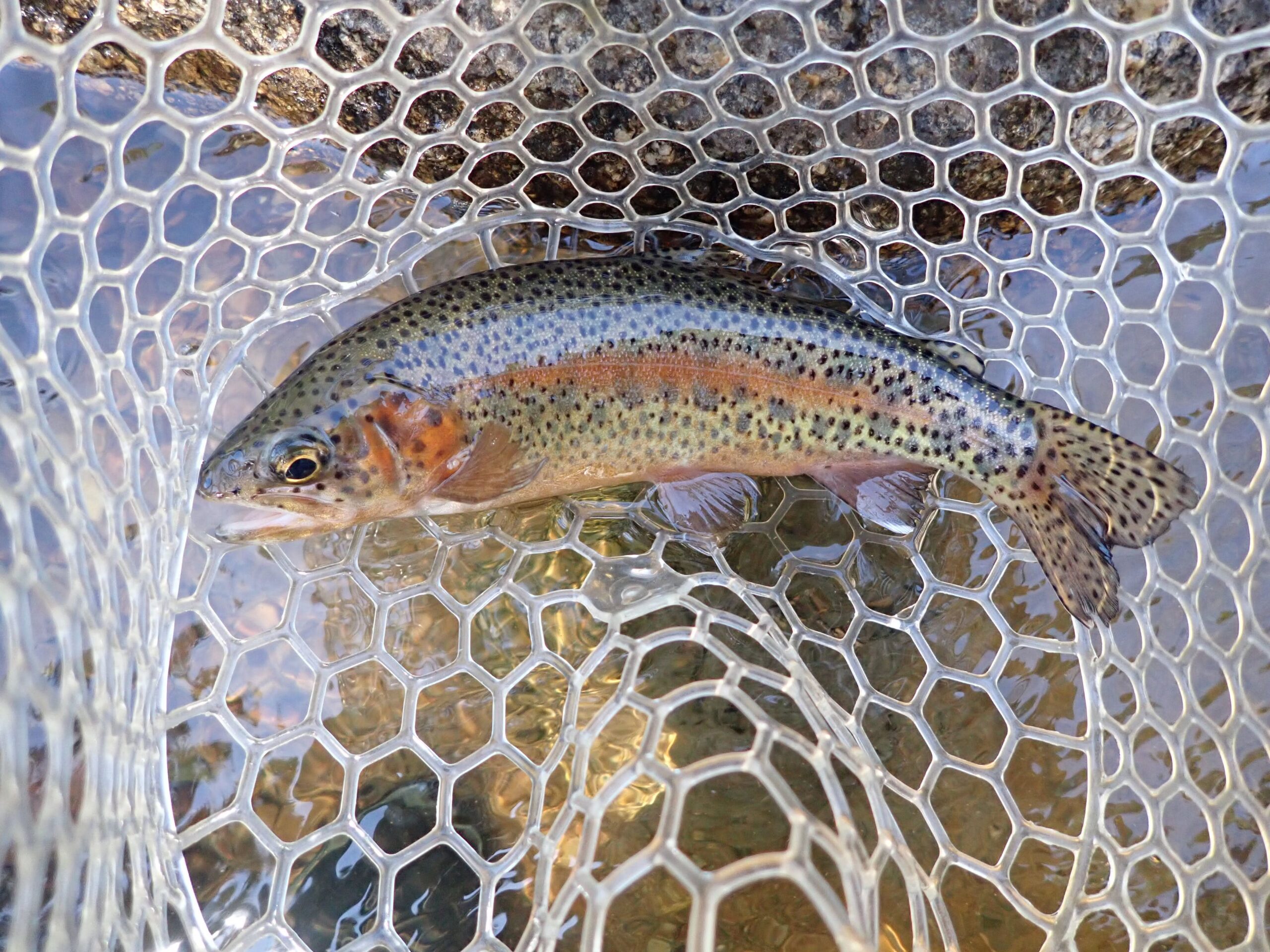 Photographed Purely for the Color
Photographed Purely for the Color
Between 12:30PM and 2:30PM, however, the fish were definitely tuned into the green drake. I spotted a handful between 1PM and 2PM, but they were not available to trout in great abundance, I attributed much of my success to trout having long memories for western green drakes.
What sort of water was the most productive? Deep slots and potholes around exposed boulders produced some surprisingly nice fish. Also, the lip of pockets and runs, where the water began to accelerate and sluice over the lip was another favorite. On several occasions I gave up on the drift and made a lift just prior to the fly racing over the lip, and I found myself attached to a fish. This always amazes me.
By 3:30PM I decided to call it a day, however, on my return hike I could not resist the temptation to make a few casts to my favorite pool. Upon my arrival I lobbed ten casts with the double dry, but these selective fish were having none of it. While I observed, a flurry of rises commenced, but their target was so small that I was unable to determine the preferred food item. I began to cycle through fly changes, and I replaced the parachute green drake with a size 18 deer hair caddis. It became apparent that caddis was not the answer. Next I knotted a Jake’s gulp beetle as the trailing fly, and it was equally ignored. Finally in frustration I stretched my net seine across the mouth, and I held it in the current for three minutes. When I examined the contents of the seine, I noticed some nymph casings and a crippled mayfly with a dark olive body. I concluded that the fish were responding to a blue wing olive hatch, and judging from their aggressive feeding, I guessed emergers. I replaced the beetle with a soft hackle emerger, and I dabbed the body with floatant to fish in the surface film. This generated a couple looks, but no action. Next I replaced the soft hackle emerger with a CDC blue wing olive, and once again the fish ate naturals in close proximity to my fly. I finally threw in the towel and moved on.
The prevalent size of trout on the day was eight to nine inches, but I was pleased to land five trout in the twelve to thirteen inch range. Two browns and one rainbow stretched to the upper limit of the size range. The weather was ideal, and the flows were reduced more to my liking, and green drakes were favored by the wild trout. I could not have asked for a more enjoyable fly fishing outing.
Fish Landed: 40

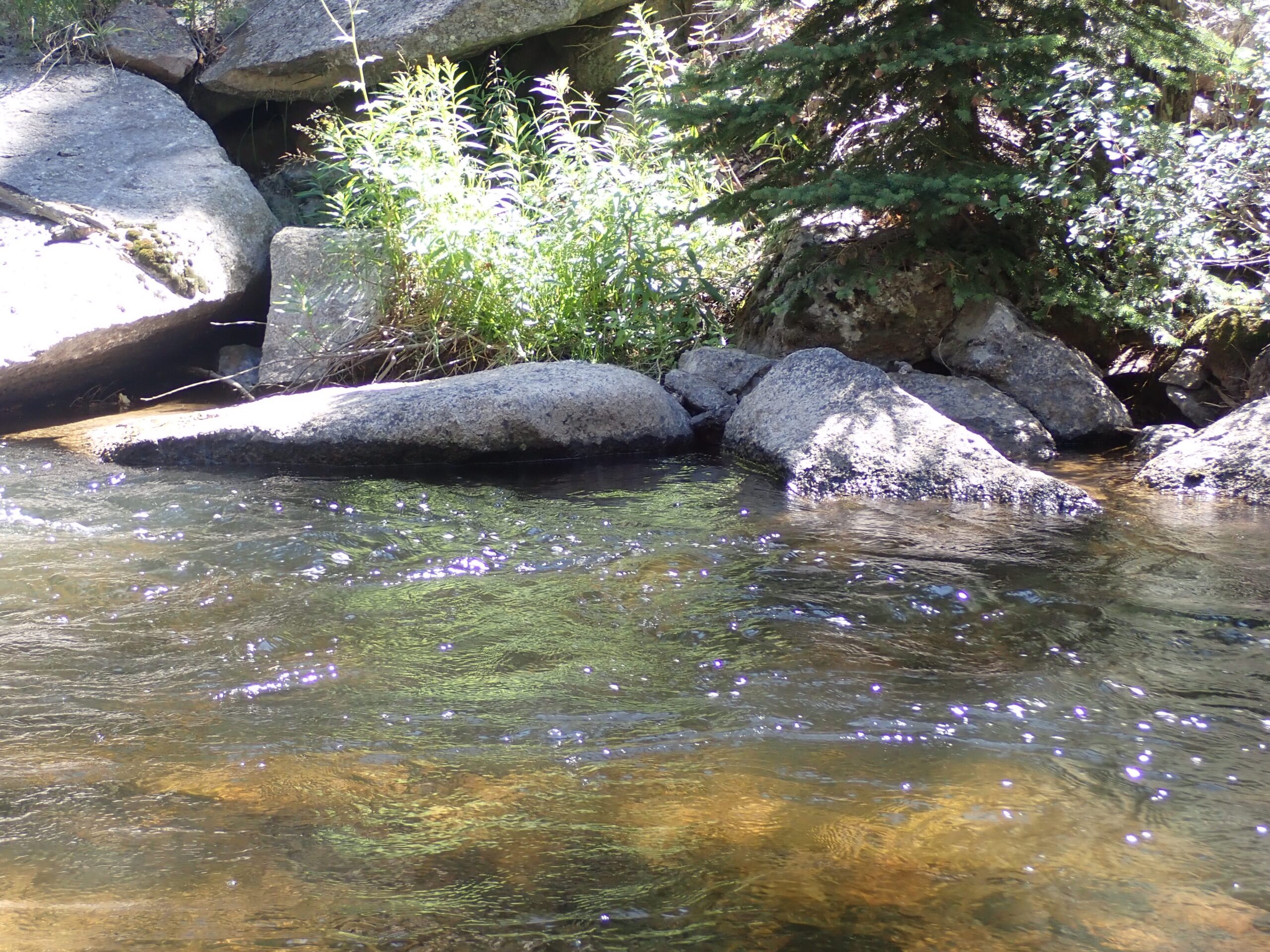 Corner Pocket Was Productive
Corner Pocket Was Productive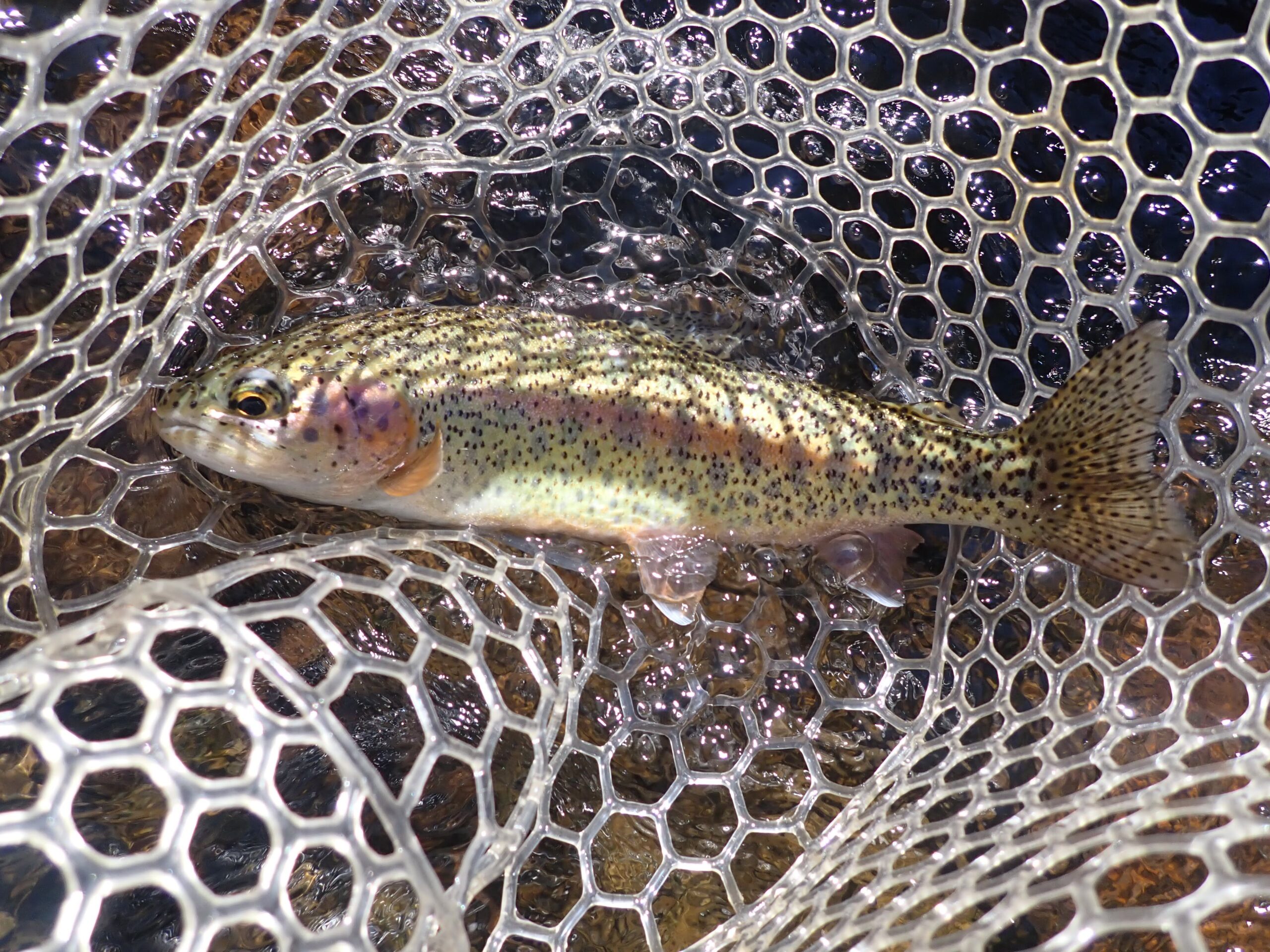 Plump Rainbow
Plump Rainbow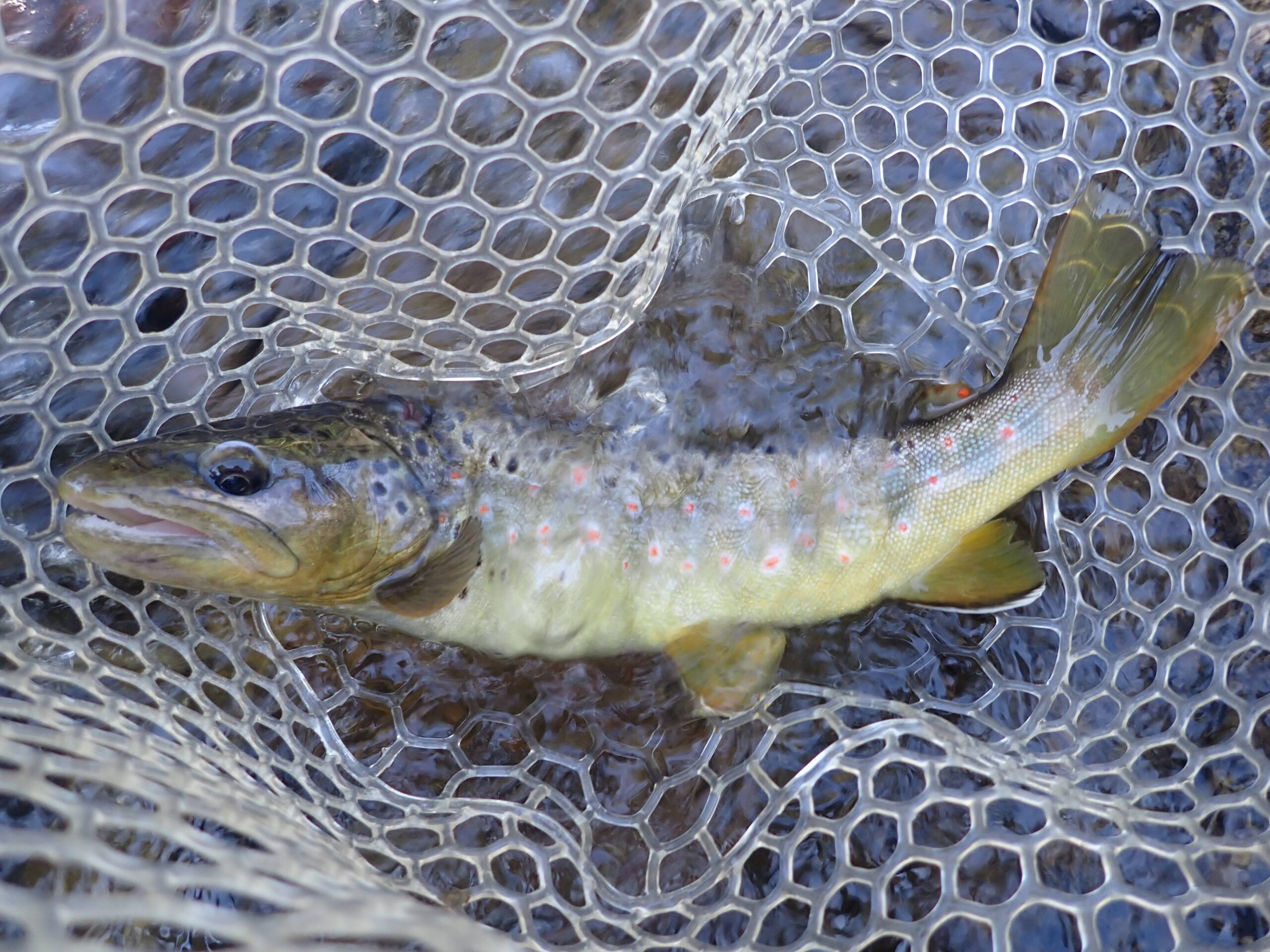 Early Brown Trout
Early Brown Trout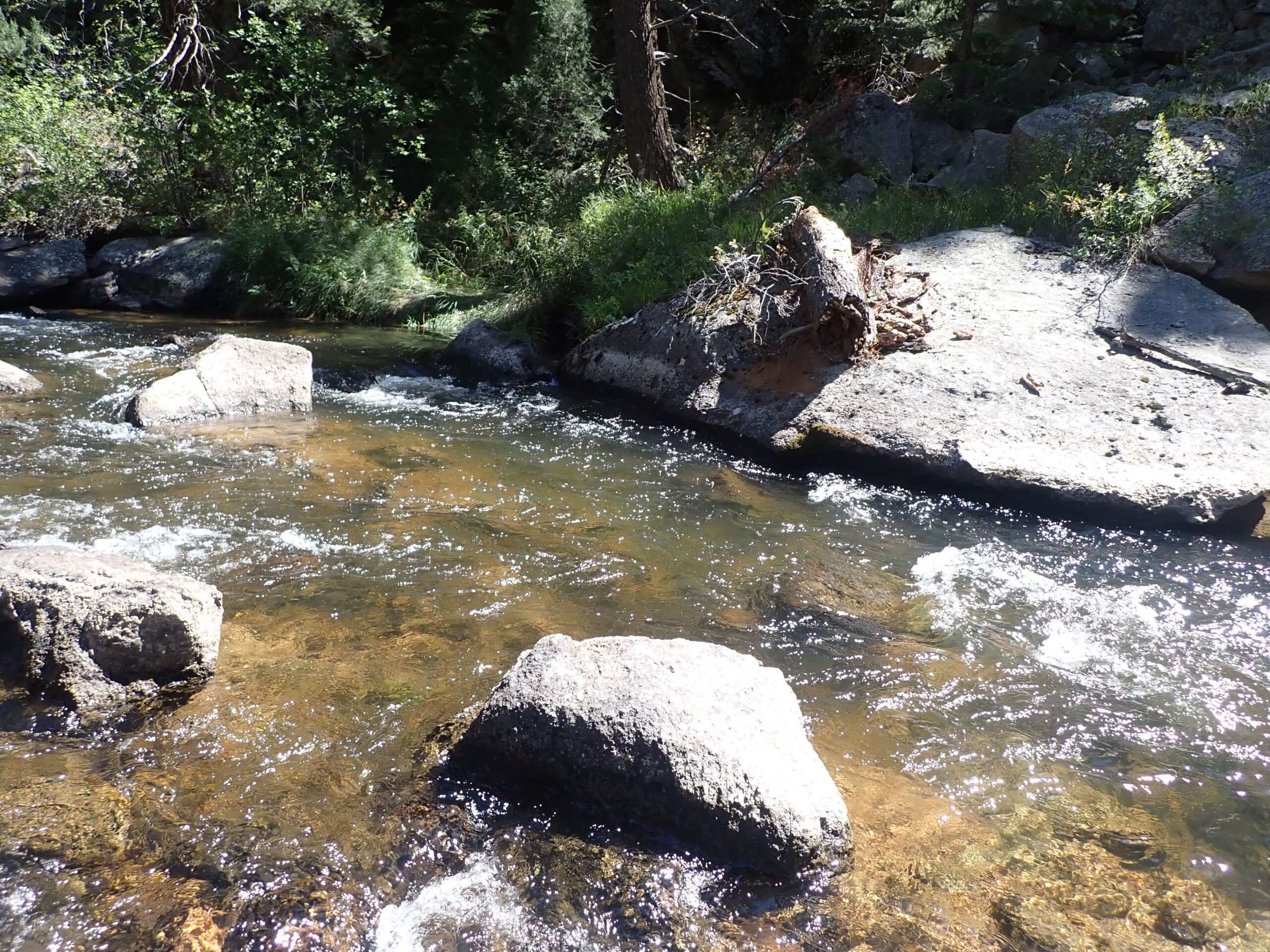 Along the Rock
Along the Rock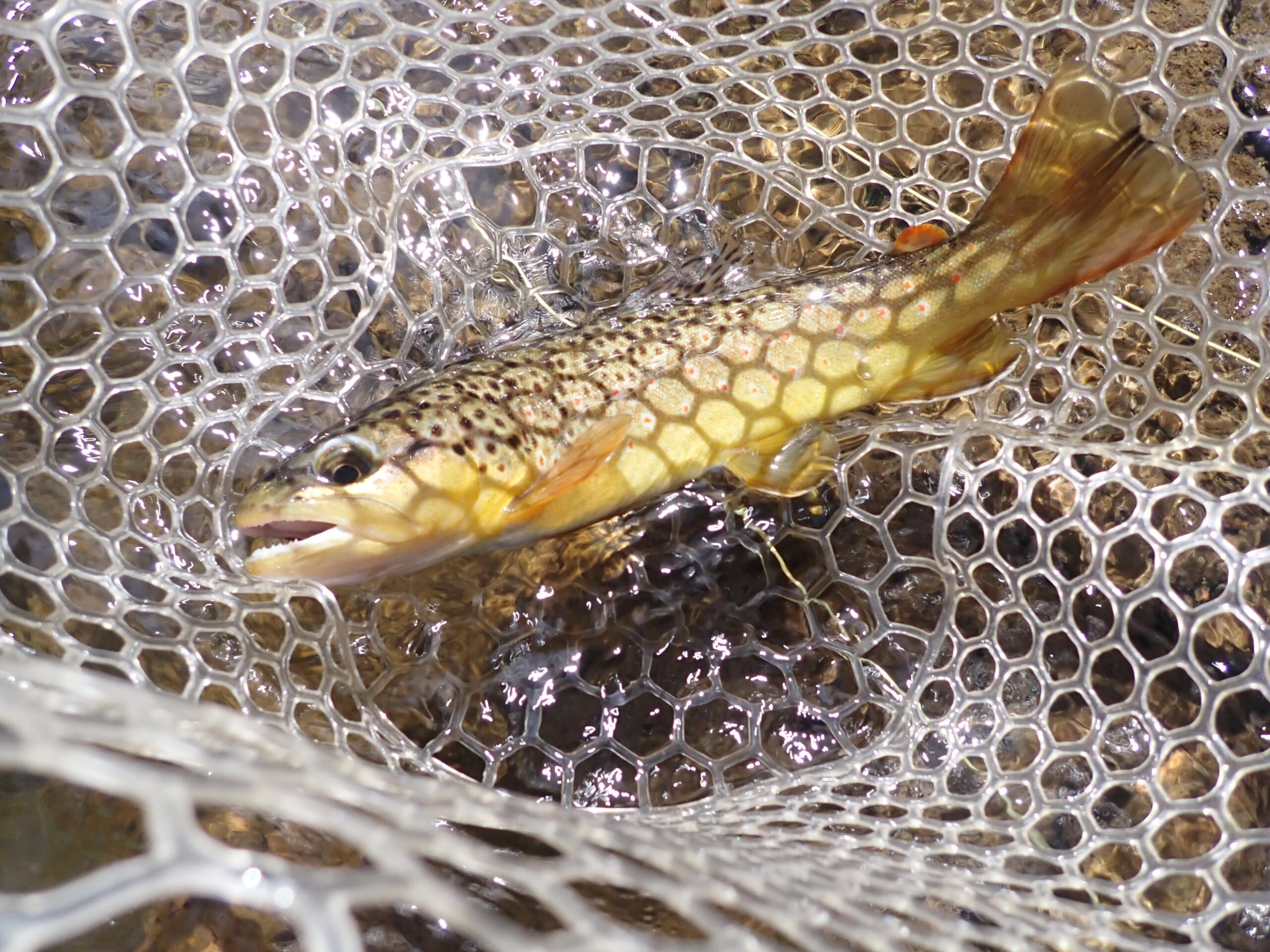 Long for These Waters
Long for These Waters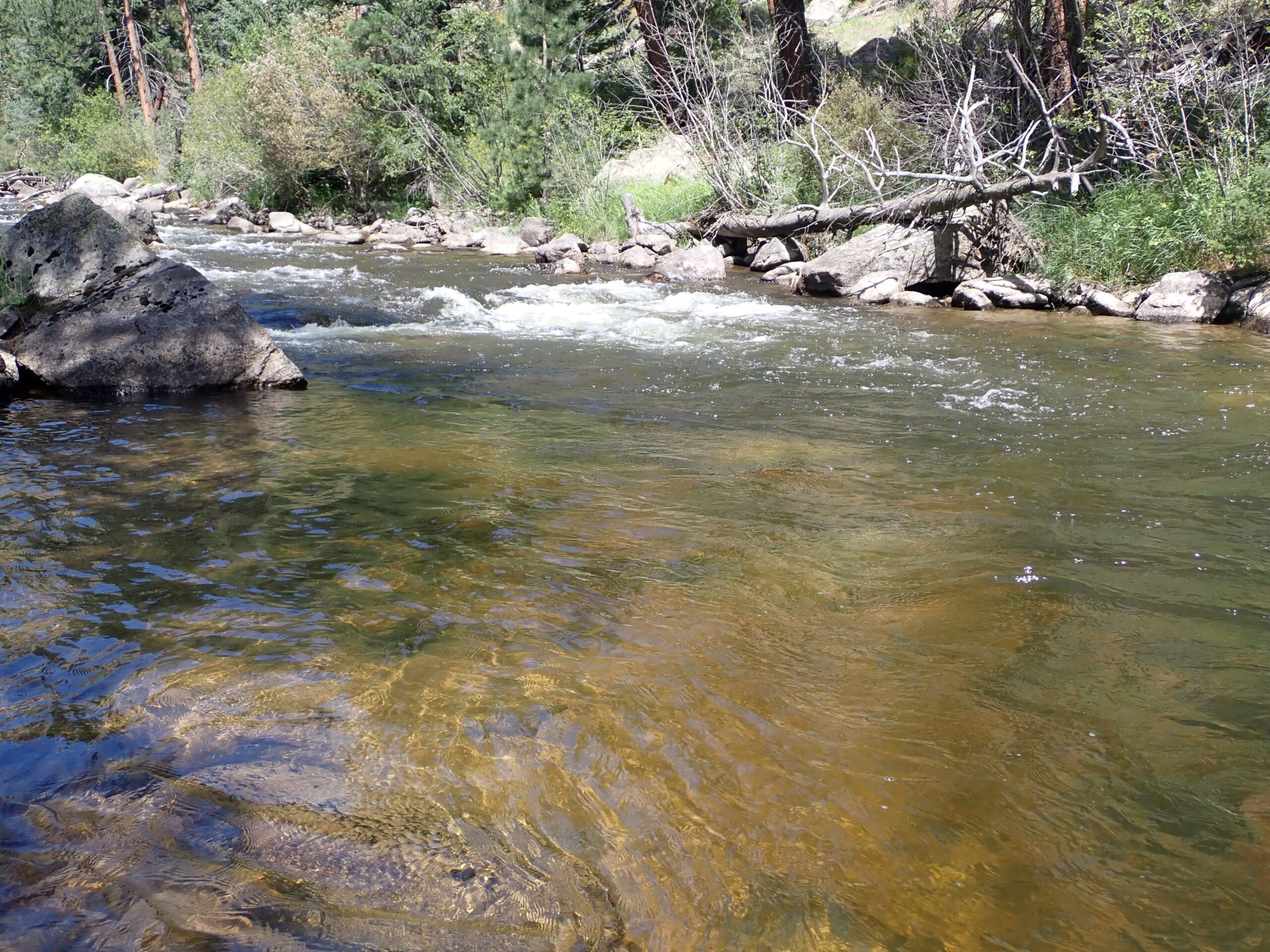 Ooh La La Pool
Ooh La La Pool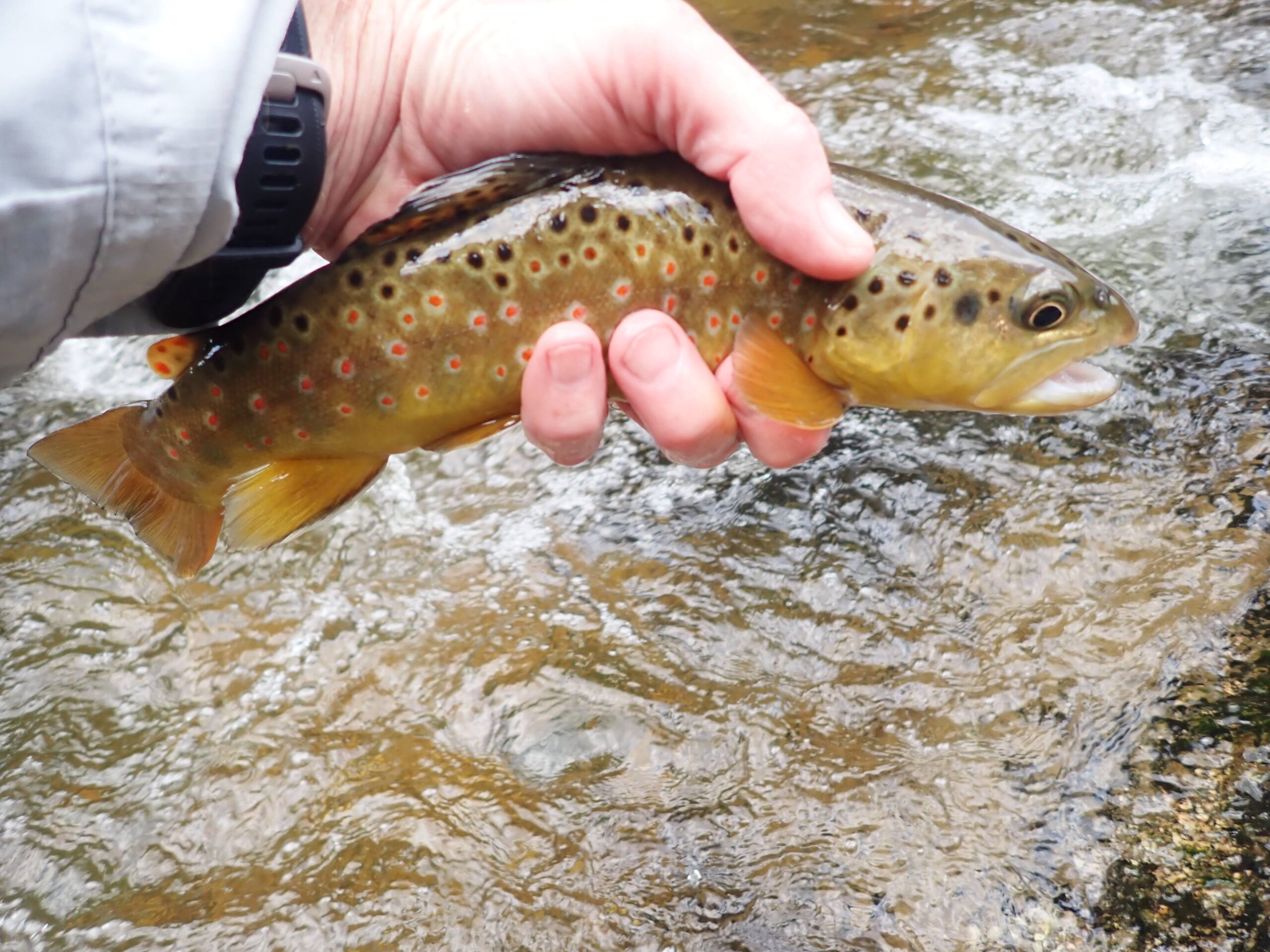 Brown Trout Perfection
Brown Trout Perfection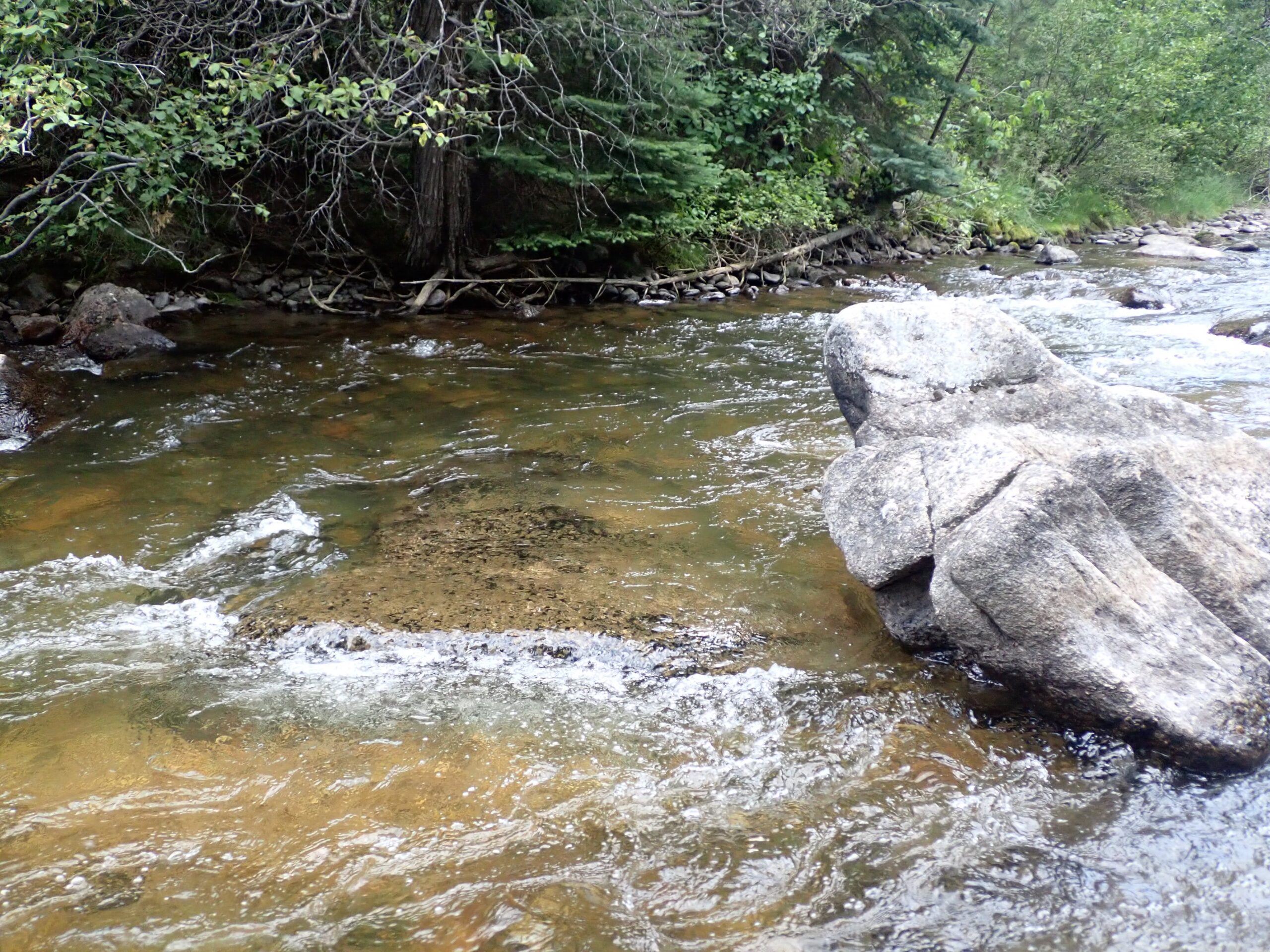 Tucked Under Branches
Tucked Under Branches